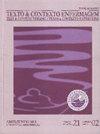为向青少年教授基本生命支持而设计的教育技术:范围审查
Q2 Nursing
引用次数: 0
摘要
摘要目的:了解青少年基本生命支持教学技术。方法:根据乔安娜布里格斯研究所的方法,在2022年5月至11月期间对七个数据库和谷歌学术进行了范围审查,以回答以下问题:“关于青少年基本生命支持的教育技术是哪些?”通过纳入/排除标准,两位独立审稿人使用EndNote®和Rayyan®软件程序选择文章。从乔安娜布里格斯研究所改编的表格用于数据提取和方法分析。数据通过PRISMA-ScR扩展检查表报告,本研究的方案发表在:https://doi.org/10.17605/OSF.IO/P87SV。结果:共选择34篇文章,将其分为6类教育技术:1)视听;2)计算;3)学习工具包;4)移动设备;5)印刷品;6)制造的。自1975年以来,这一主题已出现在出版物中,特别是医学期刊上,主要由欧洲和北美作者撰写。材料包括16个实验和18个准实验试验,具有不同的方法学质量水平,主要是在高中生中进行的。结论:绘制的教育技术包括:视频、电影、数字万能光盘、图像、音乐、视听叙事、游戏、虚拟现实/化身、网络课程、计算软件、计算机和智能手机应用、任务卡和人体模型(包括人造模型)。虽然有无数关于青少年基本生命支持的教育技术,但它们并没有达到良好的实践技能水平,主要是当它们建议向非专业人员教授通风时。本文章由计算机程序翻译,如有差异,请以英文原文为准。
EDUCATIONAL TECHNOLOGIES DEVISED TO TEACH BASIC LIFE SUPPORT TO ADOLESCENTS: A SCOPING REVIEW
ABSTRACT Objective: to map the educational technologies devised to teach Basic Life Support to adolescents. Method: a scoping review conducted according to the Joanna Briggs Institute methodology and carried out between May and November 2022, in seven databases and Google Scholar, to answer the following question: “Which are the educational technologies devised/used about Basic Life Support for adolescents?”. By means of inclusion/exclusion criteria, two independent reviewers selected the articles resorting to the EndNote® and Rayyan® software programs. Forms adapted from the Joanna Briggs Institute were used for data extraction and methodological analysis. The data were reported by means of the PRISMA-ScR checklist extension and the protocol of this study is published in: https://doi.org/10.17605/OSF.IO/P87SV. Results: a total of 34 articles were selected, which were organized into six categories of educational technologies: 1) Audiovisual; 2) Computational; 3) Learning kits; 4) Mobile devices; 5) Printed material; and 6) Manufactured. This topic has appeared in publications since 1975, especially in medical journals, mainly by European and North American authors. The materials included were 16 experimental and 18 quasi-experimental trials, of varied methodological quality levels and predominantly conducted with High School students. Conclusion: the educational technologies mapped were as follows: videos, films, Digital Versatile Disc, images, music, audiovisual narratives, games, virtual reality/avatar, web courses, computational software, computer and smartphone apps, task cards and manikins (including manufactured ones). Although there are countless educational technologies on Basic Life Support for adolescents, they have not allowed achieving good levels of practical skills, mainly when they propose to teach ventilation to lay people.
求助全文
通过发布文献求助,成功后即可免费获取论文全文。
去求助
来源期刊

Texto Contexto Enfermagem
Nursing-General Nursing
CiteScore
1.80
自引率
0.00%
发文量
85
审稿时长
>12 weeks
期刊介绍:
Texto & Contexto Enfermagem provides space for reflection and deepening of knowledge about issues of practice, teaching and research in health and nursing, at national and international levels.
The journal is published quarterly in the rolling pass or Continuous flow mode, accepting manuscripts in Portuguese, English or Spanish, in the categories original article, reflection, experience report and review. Contributions designated to the dissemination of unpublished original research results are prioritized for publication. Special issues are published at the discretion of the Board of Directors and Associate Editors. All manuscripts are published in two versions, one of which is English, aiming to cover the largest number of readers worldwide.
The editorial policy of Texto & Contexto Enfermagem is based on rigorous quality criteria for indexing and publishing (including technical and normative aspects, graphic and textual quality and excellence in scientific content); on responsibility for shared management between the Board of Directors, Editorial Board and Internal and External Editors Associates; and on the rigorous and constructive peer review, preserving the anonymity of authors and reviewers (double blinded).
 求助内容:
求助内容: 应助结果提醒方式:
应助结果提醒方式:


